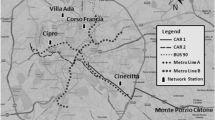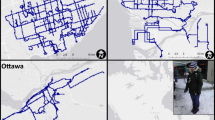Abstract
Objectives: Published data obtained from outdoor stationary sampling stations cannot be applied directly to the exposure situation in vehicles. The aim of this study, therefore, was to assess the dust exposure relevant to passengers and drivers in public buses and trams. Method: In the years 1993 to 1996, PM10 samples were taken during 201 journeys of typically 4 h duration on 14 routes (nine bus routes, five tramways) which were representative for the overall Munich transportation system with respect to area characteristics and traffic density. The concentrations of the samples were compared with those collected at the same time at sampling stations of the Bavarian State Office for Environmental Protection (OEP). Dust exposure was continuously and synchronously recorded by means of a tyndallometric device. Traffic and passenger density, weather conditions, special events, etc. were noted by our personnel, travelling on every journey. Results: The average PM10 dust concentration for all rides was 155 μg/m3 (single journey max. 686 μg/m3, min. 13 μg/m3). Interior concentrations were 1.7 to 4.0 times above those collected at the static outdoor stations. We found only minor associations between dust concentrations and traffic density or time of day. During several journeys continuous recording disclosed anomalies, dependence on weather conditions and cyclic track characteristics. Conclusions: Interior PM10 particulate concentrations were comparable to those found elsewhere in truck drivers' cabs and are in the region of German regulative limits established for the general population's long term outdoor exposure. Indoor concentrations were well above the values found at stationary outdoor stations. Additional continuous recording of dust concentrations proved to be helpful in unveiling anomalies and dependencies on external effectors.
Similar content being viewed by others
Author information
Authors and Affiliations
Additional information
Received: 10 August 1999 / Accepted: 20 November 1999
Rights and permissions
About this article
Cite this article
Praml, G., Schierl, R. Dust exposure in Munich public transportation: a comprehensive 4-year survey in buses and trams. Int Arch Occup Environ Health 73, 209–214 (2000). https://doi.org/10.1007/s004200050029
Issue Date:
DOI: https://doi.org/10.1007/s004200050029




